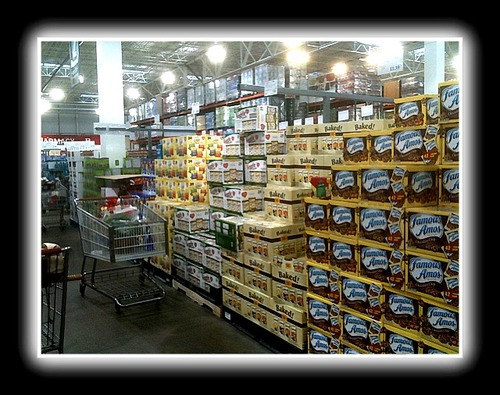 I just bought 30 rolls of Scott Tissue for 62 cents apiece, in a bundle the size of a wheelbarrow.
I just bought 30 rolls of Scott Tissue for 62 cents apiece, in a bundle the size of a wheelbarrow.
Many years ago, when I became fed up, as it were, with eating out every night in order to write restaurant reviews for the Village Voice — yes, those tribulations of modern life — I began a column called “Consumerismo” about the history and temptations of shopping. I can’t say that the effort was a complete success, but no one at the paper seemed to care what topics I approached, so even a paean to a pair of socks could, and did, become a newsprint cri de coeur. That sort of freedom exists now only in places that don’t pay a sou, like this one. May such permission, if not such compensation, thrive.
The joy of shopping isn’t the same as that of buying; the pleasure of the material hunt stands surprisingly apart from that of taking the quarry home. Shopping is learned behavior, but it is also a lot like sex, which has its own mind.
Shopping Facebook
My preferred way to defend Facebook — a kind of store — is to clue in crotchety critics to the fact that upper-case friends attach links to writing one would never otherwise see. Tech author and editor Julian Dibbell recently flagged a piece (scroll way down) by Jonah Lehrer, author of Proust Was a Neuroscientist and How We Decide, about how your brain moves your hand toward or away from objects at members-only Costco. It didn’t hurt that I love inevitable ledes: “My uncle describes Costco as the place ‘where you go broke saving money.’ “
Young Lehrer posits that specific, warring parts of our “emotional brain” decide for us whether or not we reach for that gallon of Hellmann’s (on the west coast, Best Foods). A determinist analysis, sure, but he goes on to describe how Costco primes our biological acquisitiveness by placing yummy Rolexes at the entrance (of course, they’re no longer the emblems of arrival they once were) and plumping our shopping glands with salty, fatty clots of food as we wheel through the funhouse. Nothing new here. Mr. Lehrer is a citizen of the cranium, but an alien, I’m afraid, when it comes to shopping.
You may recall the ancient Bloomingdale’s tactic of creating unanticipated need by planting customers in a dense forest of random objects that no breadcrumb trail illuminates and from which we can’t escape. In this, the store was also maximizing its use of limited floorspace, but the benefits of customer puzzlement seemed obvious — until repeat shoppers began to expect routinely changing arrays and adjust paths and purchases accordingly.
Any shopper can learn any well-run store. In fact, you must learn it, just the way you need to figure out how to negotiate Google or deduce the sweet spots on your spanking-new induction range. Without a lesson or two, Costco, as friend and Friend and new Costco member Laura wrote to me, induces “disorientation,” adding that a Costco novice she knows has to feel “prepared” before she risks a trip.
Seems to be plenty of Costco shop-talk out there. Do New York oldsters remember the trampling mobs at S. Klein on the Square (1937 photo at left by Walker Evans) or disrobing in public to try on cocktail dresses at the early Brooklyn Loehmann’s? Those stores demanded conversational preparation, too.
Learning Costco means making at least one buying “mistake.” Your apprenticeship may take up to a half-dozen visits over as many months. Because buying-units are usually mammoth, it’s easier to get Costco to “work” if you’re planning to serve lunch to everyone on the unemployment line or split that tub of brined capers among all the Sicilian restaurateurs in your village, or state.
But can you shop solo and still earn your big-box degree?
Rules of Warfare
Let me submit my own Costco axioms, and then we can walk through. First, it may lessen anxiety if you understand that in spite of the store’s Piranesian aspect and colossal piles of double-scale boxes and jars, Costco actually offers little in the way of choice.
Any corner bodega will have more varieties of cereal or soap; the symphony of brands that stands for capitalist profusion on the one hand and manipulation of desire on the other is replaced at Costco by a very loud string quartet. So, you need detergent? Here’s a single powder; there’s a liquid, one with bleach, the other without. Quick, is it a better per-load value than at Target? Can you lug anything so large? Do you prefer one that isn’t here? That same logic pertains to crew socks, grass seed, rice. Easy to decide.
Second, Costco rarely changes its layout or varies core offerings. Maybe it’ll stock some novel Neutrogena something-or-other for a couple of months, but then the interloper will vanish as the usuals keep their place. So after a few trial runs in which you figure out that the creamy organic peanut butter — too bad hubby likes crunchy –is always just around that same corner, what was once a siren confusion of bargain sin gives up its first-date allure and quickly dwindles to a staid, if satisfying, consumer marriage.
Third, divide your shopping world into Toilet Paper (must have), Guacamole (can have), and Flat Screen (already have, but want bigger). Oh, I almost forgot the dangerous Treat (need to know what it’s like to have, will never, ever be cheaper to have). When you divide everything you see into haves and have nots, you may begin to break the Costco spell.
I have a game I play, too, as I head toward checkout: I look in the basket to find the single item I can lose and burn off some of those free-sample calories (as in the salty chicken noodle soup below) by wheeling the orphan back. Don’t worry, chances are better than good that you’ll find something to ditch — and in case your emotional brain decides you can’t live without it, you can always return.
I probably don’t have to tell you that not everything at Costco is cheapest, or that your bag of 16 lemons makes an awful lot of lemonade. (Bile-green mold teaches a particularly effective Costco lesson.) You will soon learn to love the generic sight, if not the sound, of “Kirkland.” As in any store, read labels with care and buy as pure as possible. Do not purchase what you don’t know, or almost know
Finally, there’s drugs and — vegans, stop here — beef. You can find prescription medicine prices at your Costco branch online, and not only for limited-list generics. That’s why I paid the $50 to join: one of my necessaries was one-fifth the usual, exorbitant price..
And I am not the first to state that you can’t get better market-steak for your Amex dollar. Only chopped meat comes in organic, sorry, but there’s rib-eye and New York, precut or slab, Choice or, yes, Prime. Rub with a bit of fat or oil, pepper, sear for a couple of minutes on each side, finish in a 500-degree oven. Remove to plate, throw butter in the pan, watch it sizzle, scrape and pour.
Salt only at the table.
For an automatic alert when there is a new Out There post, email jiweinste@aol.com .

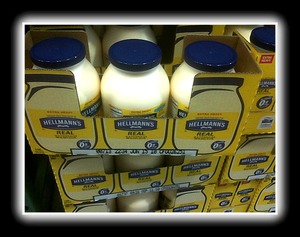
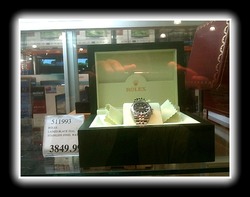

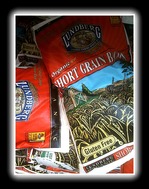
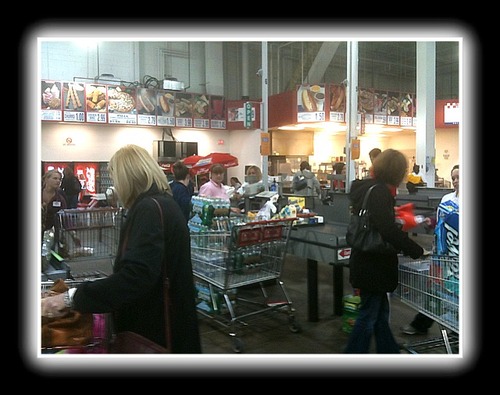
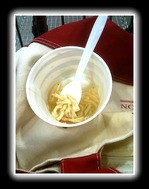
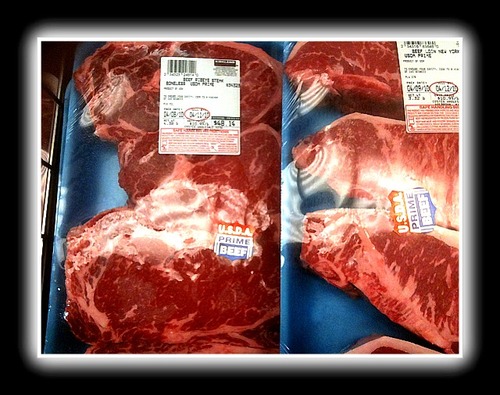
Wow–I’ve pretty much had a nervous breakdown on each of my three trips (so far) to ‘COSTCOMG’ so will keep your good advice in mind!